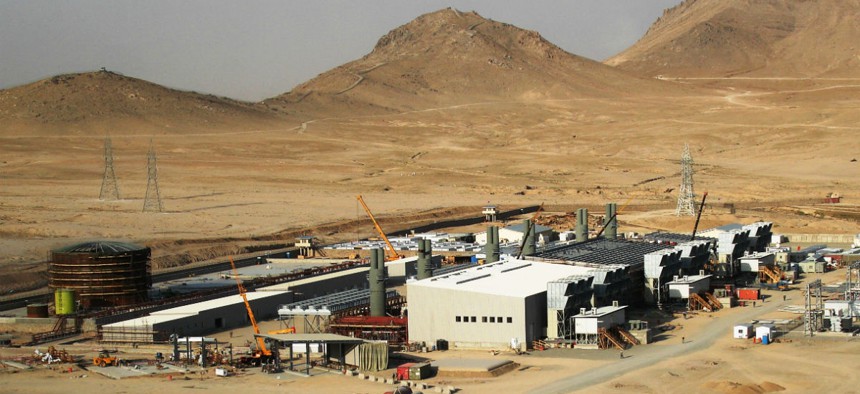USAID, Watchdog Clash on Success of $335 Million Afghan Power Plant
SIGAR questions agency’s consultation with Kabul on underused power source.
A U.S-financed $335 million power plant outside the capital of Afghanistan, which may have failed to provide back-up power during avalanches this February, remains ineffective in creating energy stability in that war-torn country, a watchdog asserted.
But the U.S. Agency for International Development, which has shepherded the project that began in 2007, calls it a success story.
In a letter posing skeptical questions released Thursday, John Sopko, special inspector general for Afghanistan Reconstruction, wrote to USAID describing the natural disaster last winter that killed hundreds and created electrical power outages in the region during the cold season. “I am concerned that this incident may have demonstrated that the Afghan government is still unwilling or unable to fully operate the Tarakhil Power Plant even during emergency situations in response to critical, short-term needs,” he wrote.
The plant, built by contractor Louis Berger Group/Black & Veatch Joint Venture, was designed to give the Afghan people a backup power source and independence from energy imports. It “was intended to significantly bolster the power available on Afghanistan’s national power grid through the continuous operation of 18 diesel engines generating power,” Sopko’s letter noted.
Although the project was plagued by cost overruns, poor contractor performance and delays, the plant was ultimately handed over to the Afghan government in June 2010, SIGAR noted. “A June 2014 USAID inspector general’s report that SIGAR called “alarming” said the plant was operating “at just 2.2 percent of power production capacity, and that the Afghan national power utility could not afford to operate the power plant, with an estimated $245 million per year needed for the fuel alone.”
USAID then promised to remedy the situation by December 2014. “While I commend USAID on its commitment to take corrective action to address the OIG findings,” Sopko wrote, “the blackouts and lack of power throughout Kabul resulting from the avalanches raises questions regarding the efficacy of those actions and the commitment and ability of the Afghan government to operate the Tarakhil Power Plant as needed or when absolutely necessary.”
He asked USAID to report on supplies of diesel fuel, monthly megawatt output, and the extent to which the agency regularly consulted with the Afghan government on the plant’s usability.
Asked for a response, Larry Sampler, USAID’s assistant to the administrator for Afghanistan and Pakistan Affairs, said in an email to Government Executive that his agency had replied to SIGAR saying the power plant is effective and that it provided electricity to Kabul after the February avalanches. It has “proven to be a vital component of Kabul’s power grid,” he said. “Tarakhil provided Kabul with an additional power source during winter months and during emergencies when imported power was interrupted. The plant was particularly important after the February 2015 avalanches… because it provided over 6,000 MWH of essential power to Kabul until DABS, the Afghan national power company, was able to restore the knocked-out transmission lines. The ability of DABS to conduct all of the repair work – without financial assistance from USAID – is another demonstration of the progress Afghanistan has made toward self-sufficiency.”
Panning back to the larger energy picture, USAID noted that in 2002, only 6 percent of Afghans had access to reliable electricity. “Today, 29 percent of the population is connected to the electric grid, including more than 2 million people in Kabul who now benefit from reliable electric power,” Sampler said. “USAID assistance has focused on making DABS self-sustaining through increased revenue collection and increased productivity."








